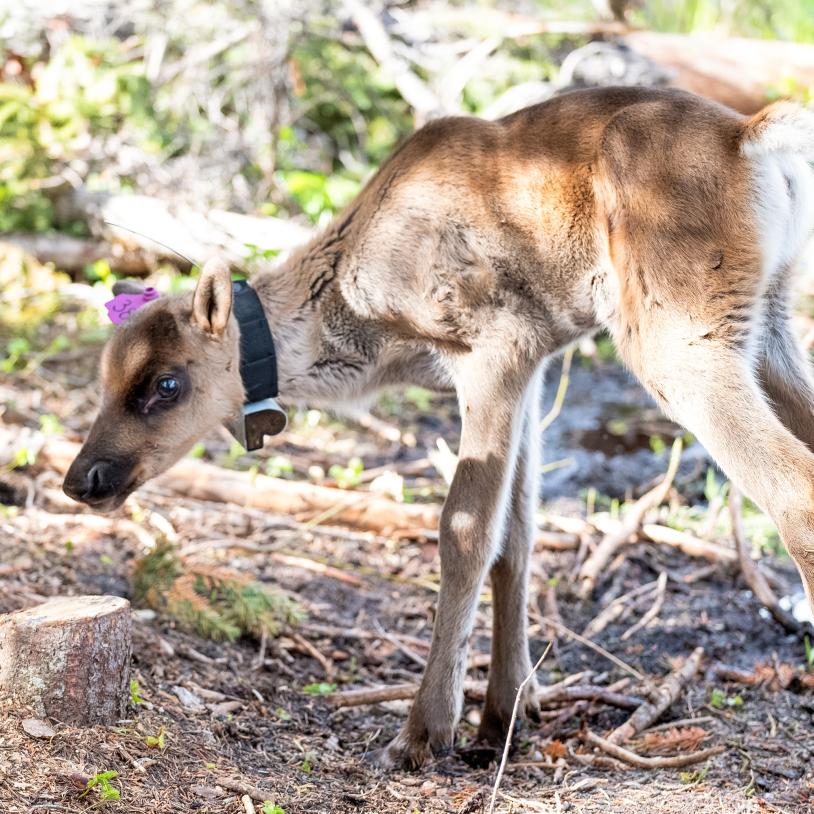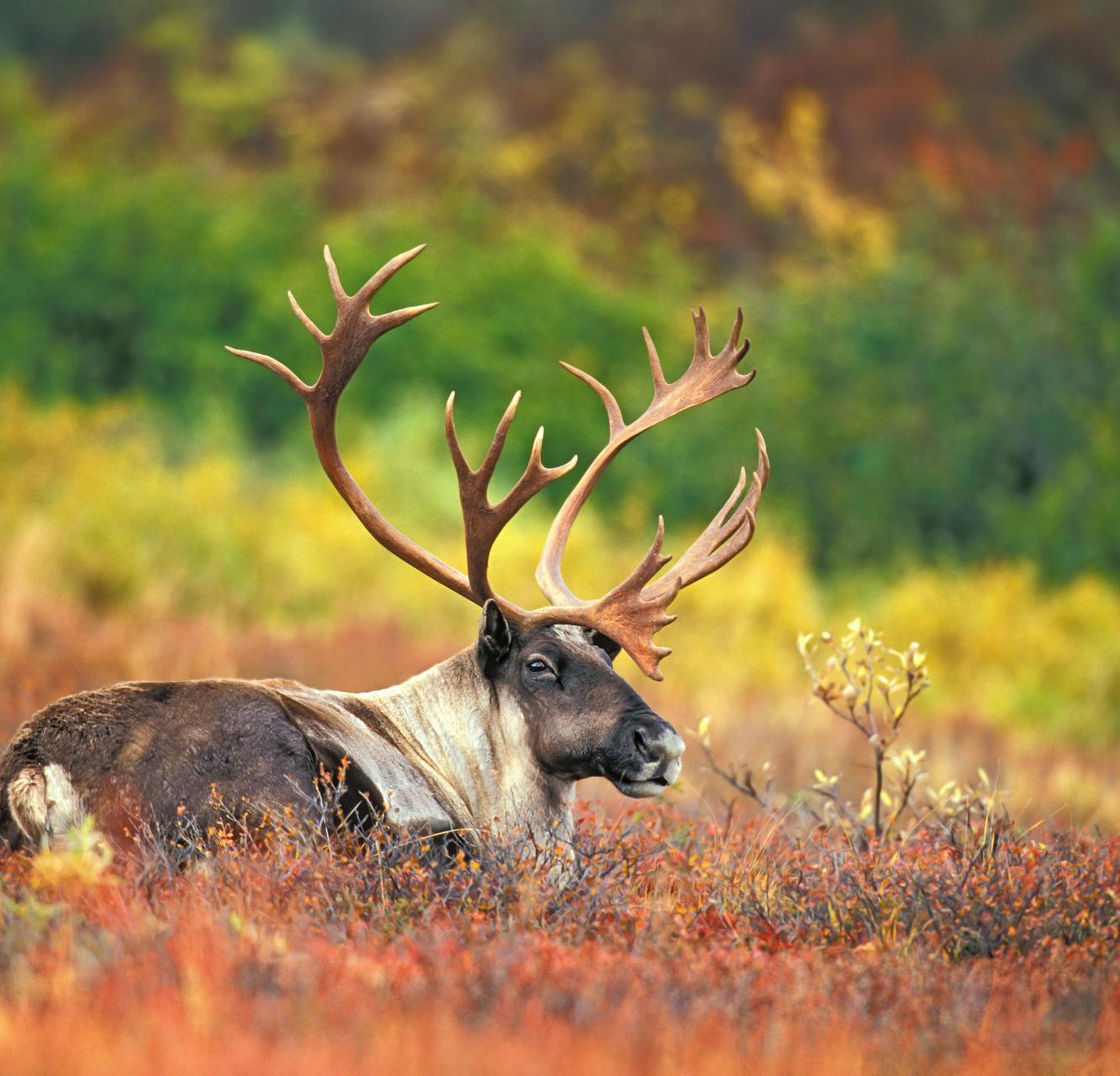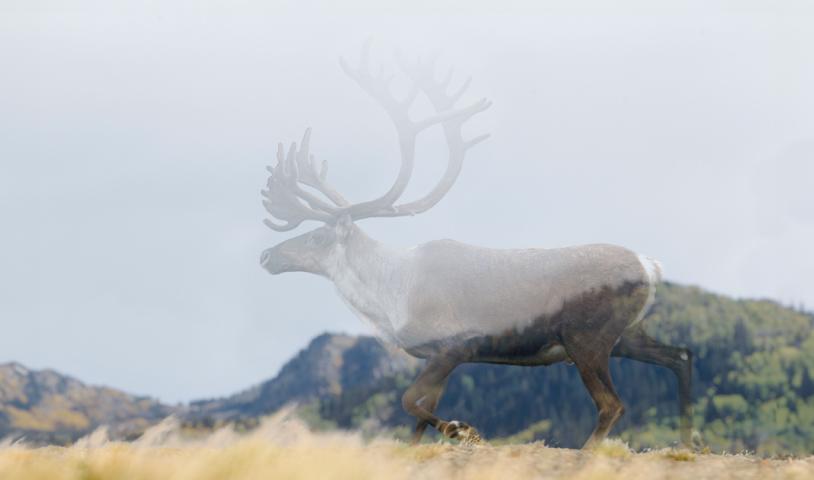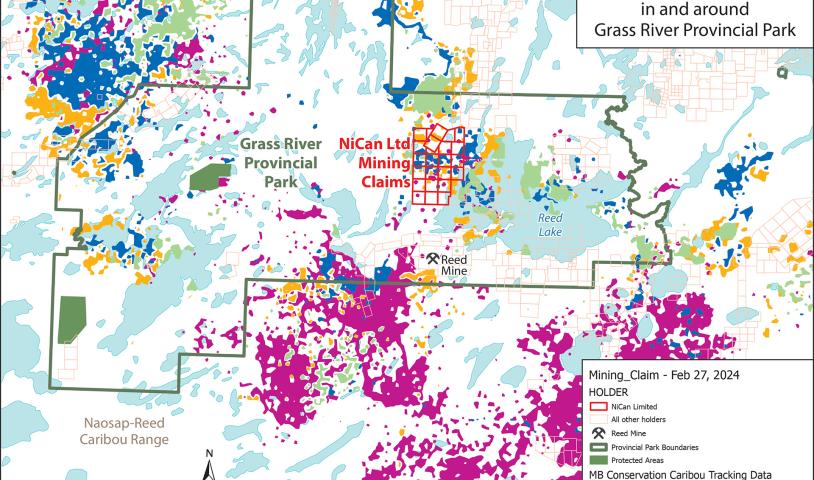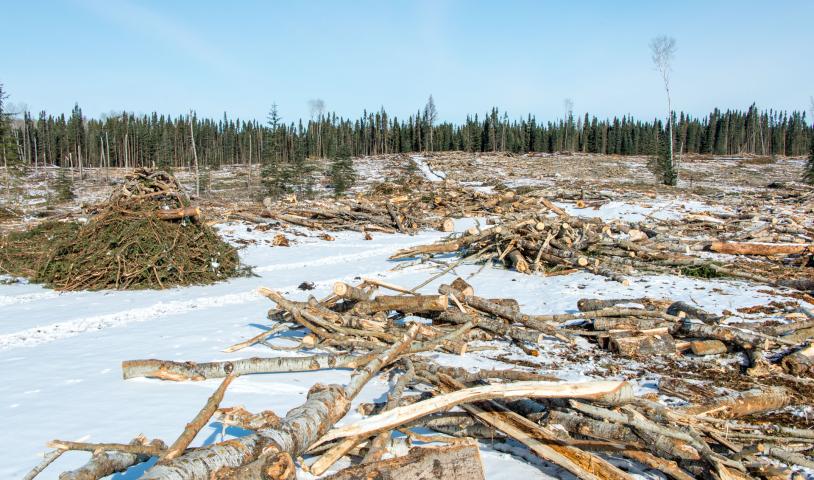Manitoba caribou in crisis following 2025 fire
Wednesday, May 28, 2025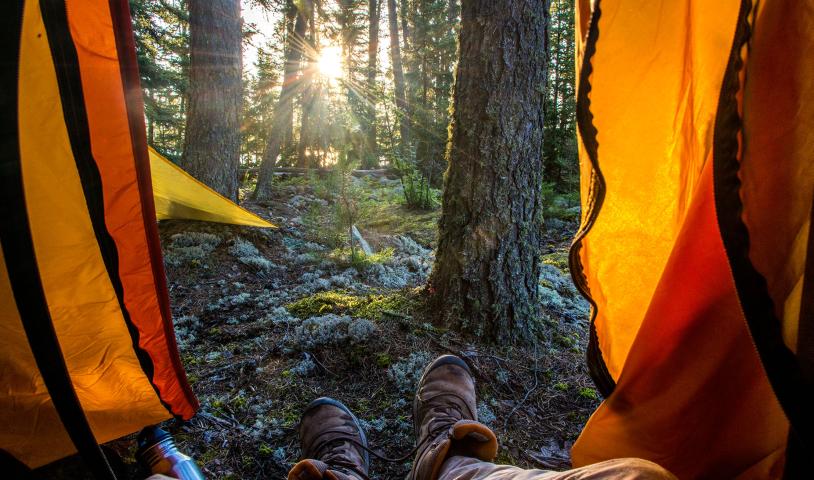
Government inaction and missteps create catastrophe for Nopiming Boreal Caribou
In my decades of traipsing through Nopiming Provincial Park, being in an old ecosystem makes me feel closer to the gray ghosts of this forest — boreal woodland caribou. Looking after old forests is how we care for caribou, and it’s how we care for our own essential life support system. Government’s bad decisions on caribou here and far roar loudly today as we watch this caribou herd suffer catastrophe from a climate change-fueled forest fire.
When the fires in southeast Manitoba started around May 12, I was watching the Manitoba government’s fire map. I could see the places I love in Nopiming were already burnt. A friend pointed me to the NASA map, which had real-time hotspots, and that's when alarm bells started ringing. Friends with cottages at Ingolf, friends who live at Bird Lake and my own family at Lac du Bonnet were top of mind. Tragedy brought national attention to this deadly wildfire season. The news coverage detailed evacuations and impacts on cottages. But it was the old forest, the heart and soul of Nopiming that I was grieving for.
Driving into Nopiming takes time, and it takes you through layers of nature. Heading out of Lac du Bonnet, you travel through mixed-wood forest, mostly poplar. Rural homes and vacation lots line the road. As you leave the Bird River heading north, you enter Canadian Shield rock dominated by jack pines with no more development. The forest around Mink Lake in the south is young, having burnt in 1983. Shortly after Cat Lake, you enter Nopiming in its final form. The jackpines around Black Lake are tall and scraggly. The lichens on the forest floor are thick, having developed over decades since the last fire. The forest is cooler, creating its own microclimate and the perfect home for Nopiming's caribou. Until now.
Decades of strategic talk… just talk
The caribou in Nopiming live in the Owl Lake - Flinstone caribou range, as delineated in various government documents going back decades. Sitting in my office is a copy of the 1993 Woodland Caribou in Manitoba report, a response to the Committee on the Status of Wildlife in Canada (COSEWIC) listing the boreal woodland caribou as vulnerable in 1984. The recommendations in this report are to protect caribou habitat and put more resources to learning and monitoring. That was 32 years ago.
I also have the Manitoba caribou strategy from 1998. And 2000. There's a 2005 one that came out in 2006. The only Action Plan created for caribou in Manitoba — the necessary step after a strategy — was released as a draft in 2011. Fourteen years on, there is no final version of this action plan, nor any other plan for different caribou ranges in Manitoba. A 2015 provincial caribou recovery strategy has timelines in it that have never been met, highlighting the never ending cycle of failed promises on species in general, and boreal caribou in particular.
The 2012 federal recovery strategy was the definitive document that gave us a path to care for boreal caribou across the country. We led the charge back then, with EcoJustice and lots of ally organizations, to get meaningful protection for a vanishing icon. The government of the day, Prime Minister Harper’s Conservatives, delayed action on caribou preservation by giving the provinces five years to come up with plans. Do you want to guess how many provinces followed through five years later?
Prime Minister Trudeau’s Liberal government barely blinked when the provinces failed to follow through with their legal commitments under the federal Species At Risk Act (SARA) 2017. In Manitoba, Premier Pallister and then Premier Stefanson failed to deliver on caribou protection despite the feds asking them to do so. Deadlines for plans and research were simply ignored. Will we see any difference with a new Prime Minister and Premier?
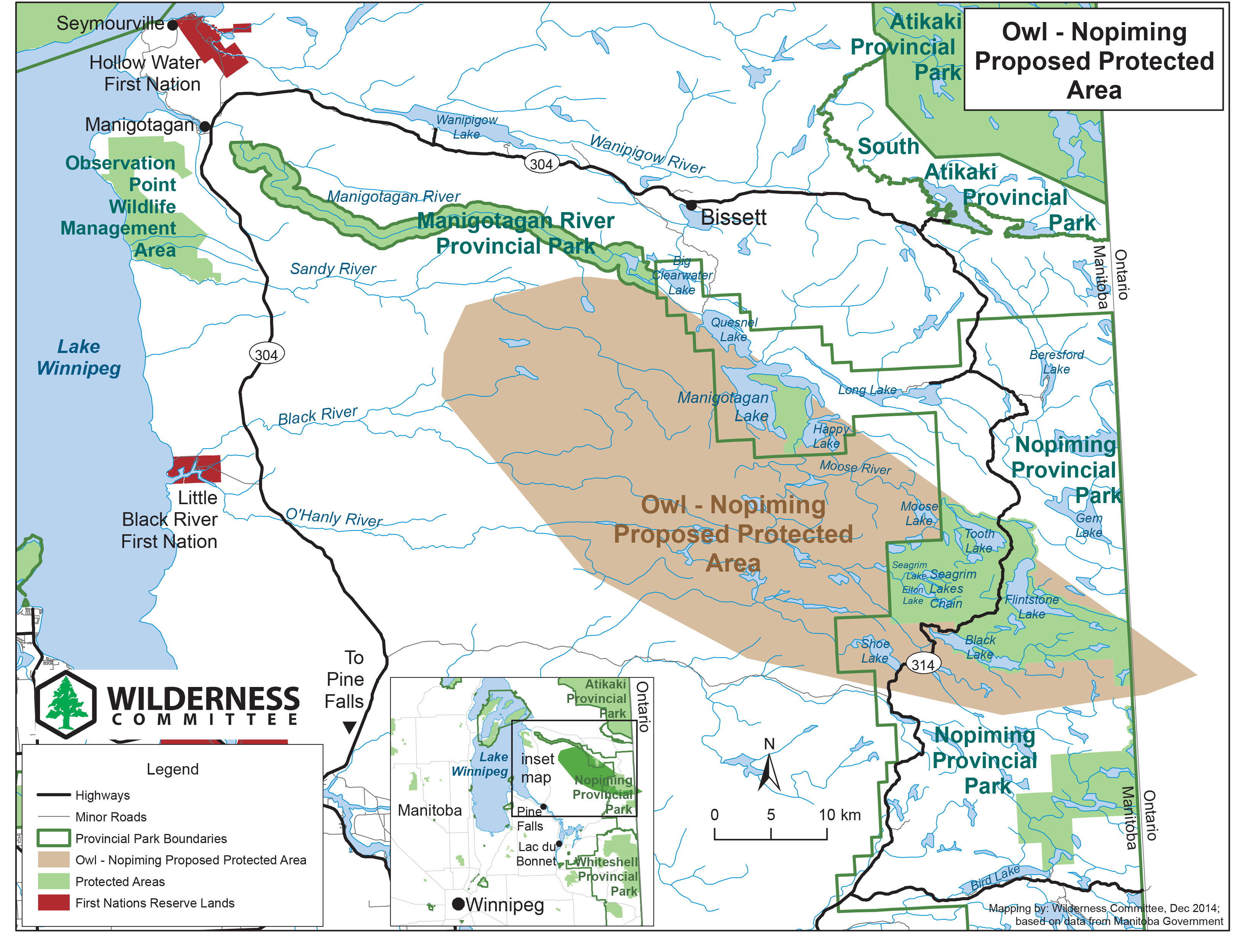 The core proposal from the 2011 draft action plan is the guidance we need. Covering Sagkeeng, Black River and Hollow Water First Nations territories, the Owl - Nopiming proposed caribou protected area spans Nopiming and overlaps much of the old forest that would give caribou a shot at surviving. Or, it would have. Will they have enough space to go, with the current fire still out of control in their forest?
The core proposal from the 2011 draft action plan is the guidance we need. Covering Sagkeeng, Black River and Hollow Water First Nations territories, the Owl - Nopiming proposed caribou protected area spans Nopiming and overlaps much of the old forest that would give caribou a shot at surviving. Or, it would have. Will they have enough space to go, with the current fire still out of control in their forest?
NAOSAP caribou in northern Manitoba
I drove into the caribou forests north of The Pas for the first time in the fall of 2010. Forest fires had burned through the area identified by GPS-collar data as the core habitat for caribou here. Fifteen years ago, I was a little more long-winded in my storytelling, but you can read my field report here. The question for caribou in the north was… where to?
One of the hopeful facts for caribou in the north is there is more forest in all directions. If there is a chance for caribou to survive forest fires, it is due to the room for caribou to move. But the caribou’s basic defence is avoidance, and industrial pressure on nature — extractive activities of logging or mineral exploration — can prevent them from using the forest around where they live.
While barren ground caribou on the tundra move in mass herds, relying on numbers to survive, boreal caribou disperse across the landscape so that predators will struggle to eliminate an entire herd. Unfortunately, their avoidance traits mean they simply don't live in forests where people are. Studies listed in the 2012 federal strategy state boreal caribou move up to five kilometres away from disturbances like industry roads or logging clearcuts. The industrial work in our forests and our parks has an impact — despite how industry and government sells the activity to us — and boreal caribou are suffering habitat loss.
For boreal caribou, it doesn’t matter if it’s forest fires or industrial activity. All forest activities, even recreation disturbance, move caribou out of their forest. Huge fires in the north again in 2021 mean that caribou are again on the move. Will they find enough habitat that isn’t burnt or an industrial park?
Recovery habitat and Manigotagan Lake clearcut logging
The 2015 Manitoba caribou strategy lists recovery habitat as a crucial component of caribou care. The boreal forest burns on an estimated 80 year cycle in Manitoba, and while caribou are living in one forest, they need another forest next to them to move to for when inevitable fire burns through. The forest they move into has to be at least 40 years old for the necessary lichen growth to be established to feed them.
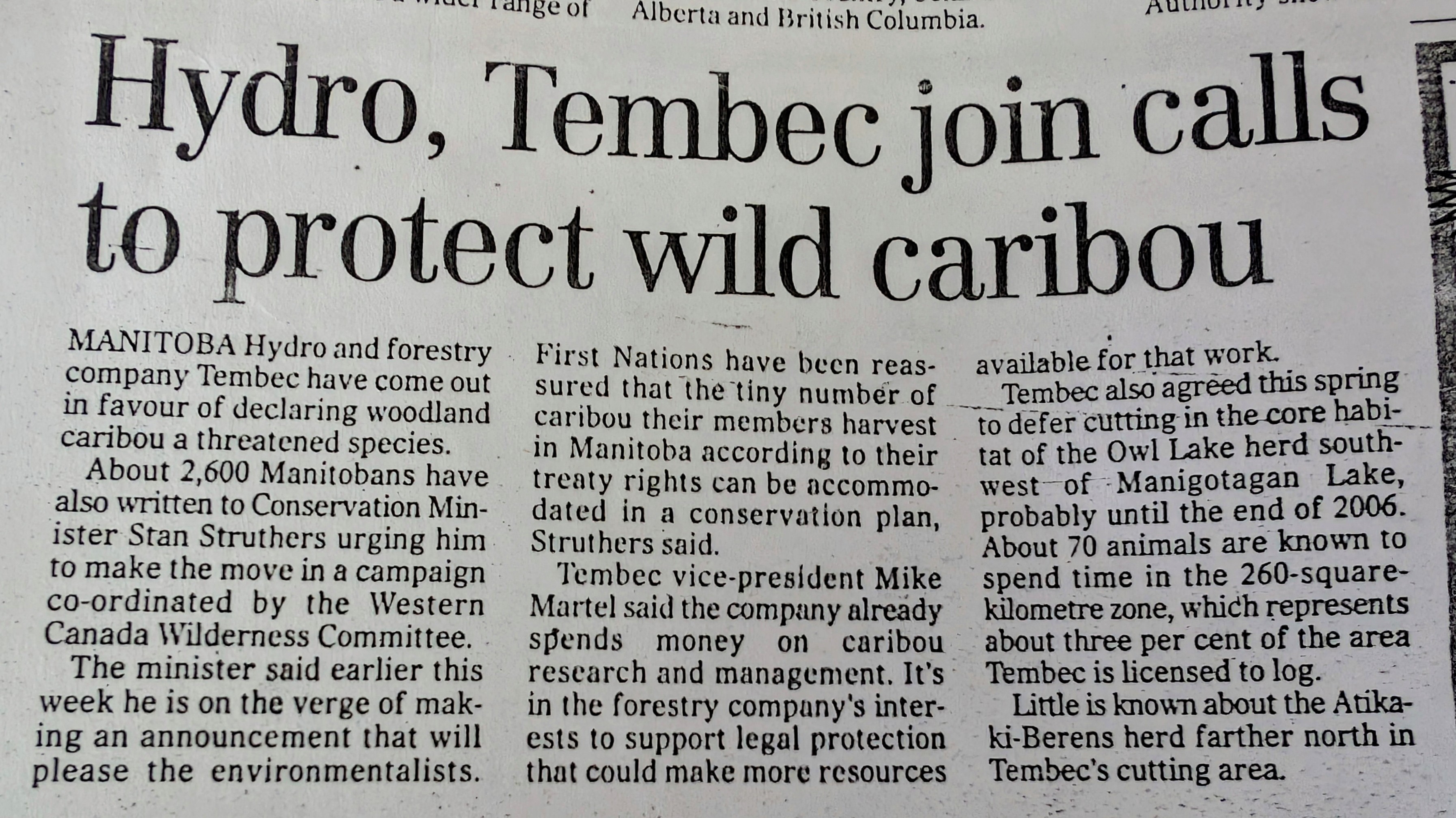
In the olden days, when landline phone numbers were listed in the phone book — 2007 — I received a call at home one evening. A government employee told me to go look at the caribou habitat logging beside Manigotagan Lake in Nopiming Provincial Park. At the time, I was focused on park logging, and logging giant Tembec had control of the forests in Nopiming. Tembec talked about small deferrals from cutting in the core caribou calving areas, but they were pushing in new all-weather roads all over the park. The long term damage from Tembec’s logging here is still reverberating, but my anonymous caller said the clearcuts there were the worst around.
We eventually went on an expedition to these clearcuts, a 30 km snowmobile and snowshoe trip that showed us the devastation of caribou habitat first hand. The clearcuts were bigger than was allowed in the province at the time. Government and the logging companies tried to explain it was an experiment to build future caribou habitat. Except it was caribou habitat already, and species law states you're not supposed to experiment on threatened species.
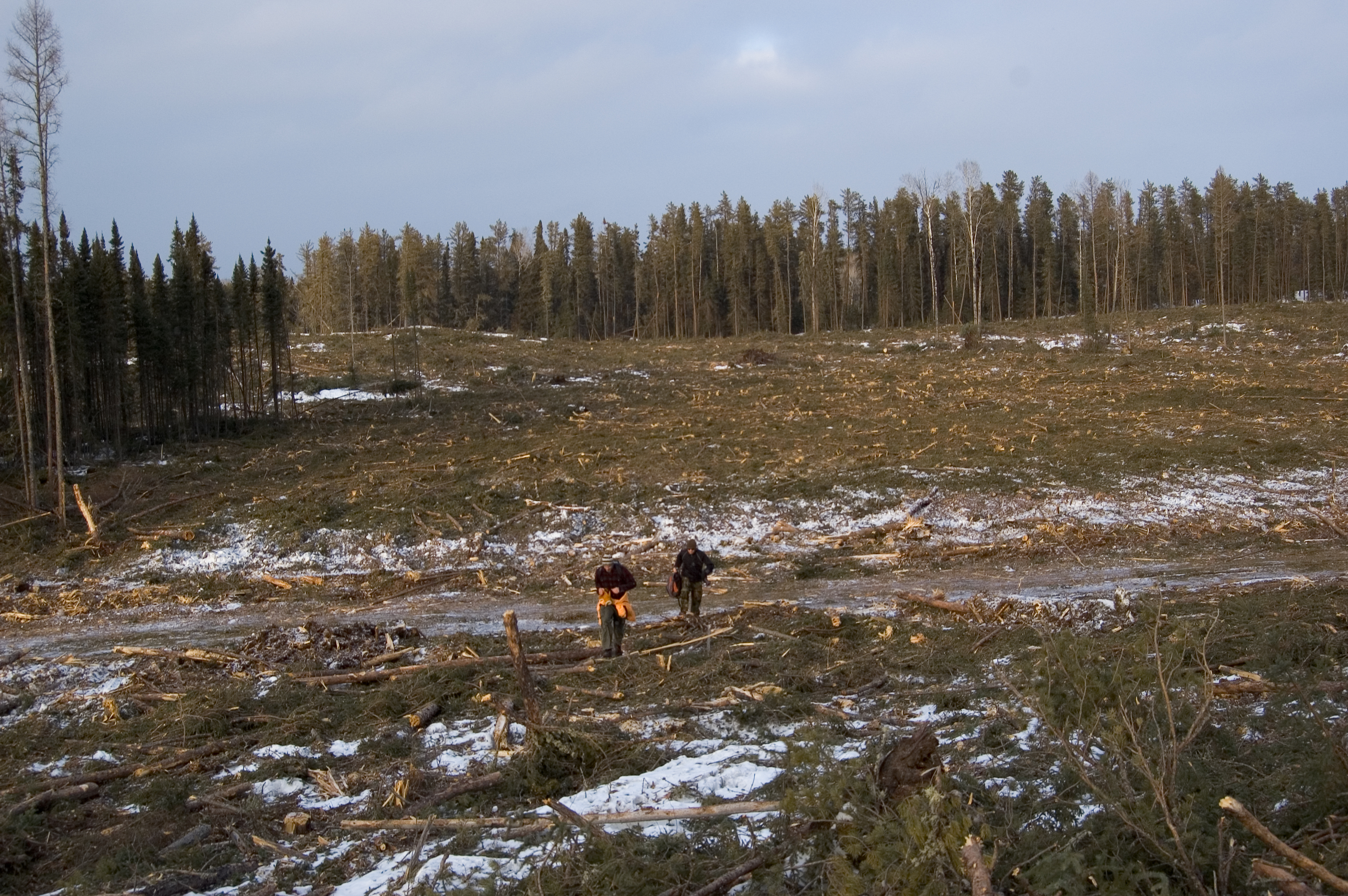
Staring at the maps of the ongoing fire covering Nopiming Provincial Park, and knowing the caribou forest is in trouble, it's hard not to be bitter. We've known for decades that caribou need places to go. We've written laws on how to protect species. The best science available was assembled so we know how to care for caribou. But all of that got dismissed because some industry proposed profits at the expense of our shared lands and waters, and governments quietly acquiesced. The caribou habitat that shouldn't have been clearcut in 2007 looms large.
Burning for this fight
Grieving for species, for the loss of nature, is another layer of difficulty for folks. So many people are asking me about the animals and the fires with a tone of despair. It is a hard time. But there are actions we can take to relieve the helplessness these fires cause. Now is the time to fight for caribou protected areas for each range in the province. We've been watching the pressure on these precious animals for decades and we've had enough. The Manitoba government needs action plans for caribou and they need them now. The federal government has to get real about caring for nature. No more pipeline czars that happily authorize wilderness destruction. No more giddy fossil fuel tax holiday celebrations and mineral exploration disruption by governments. Caribou need care…now.
May 29: The fire situation in Manitoba is worsening quickly. There is major stress for First Nations and people being evacuated in addition to the harm being caused to wildlife and wild places. We will continue to work to ensure that the future for people and animals is safer.
